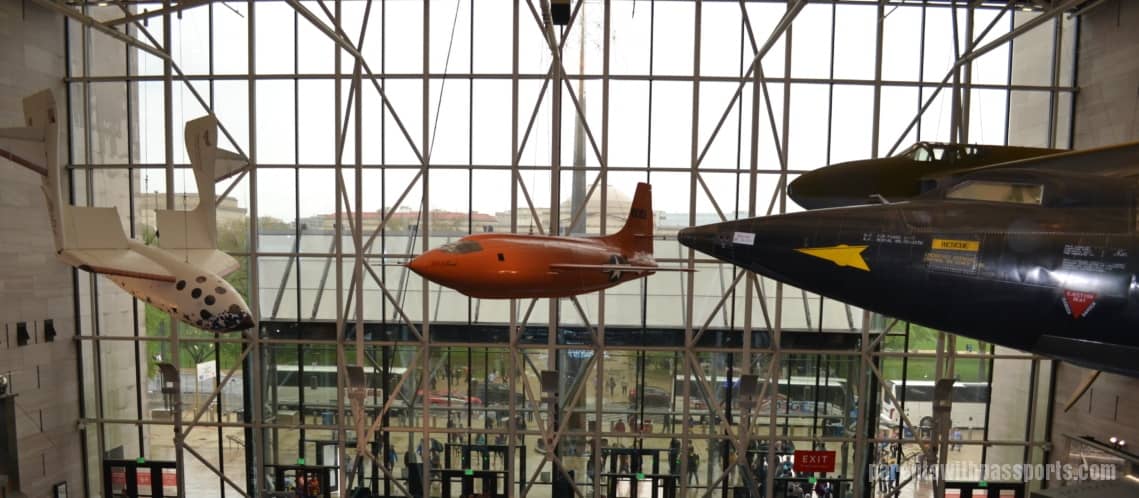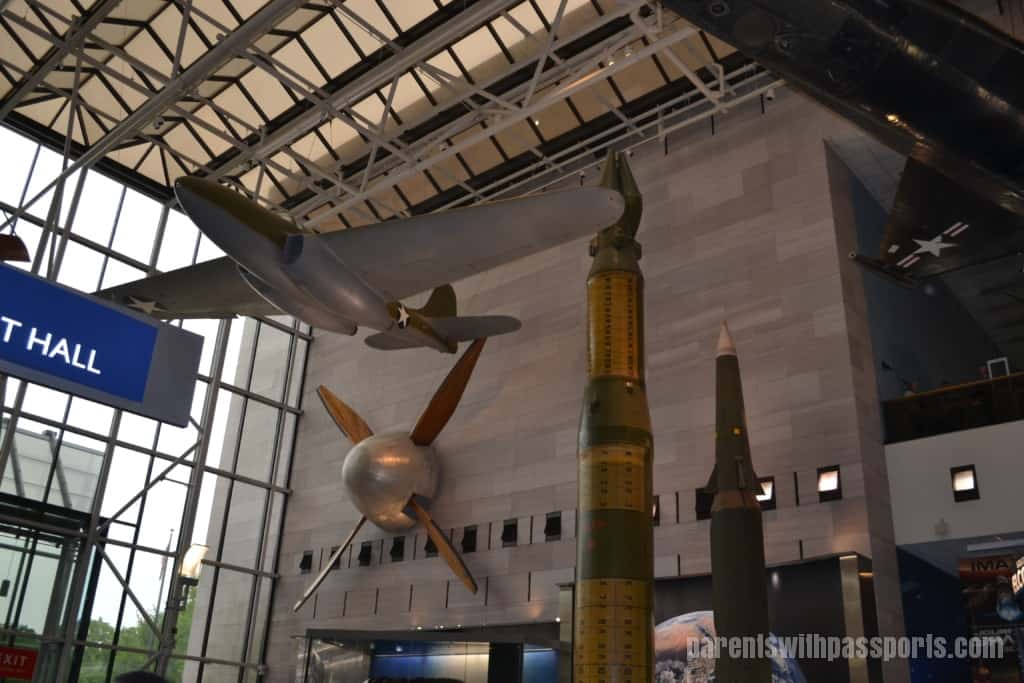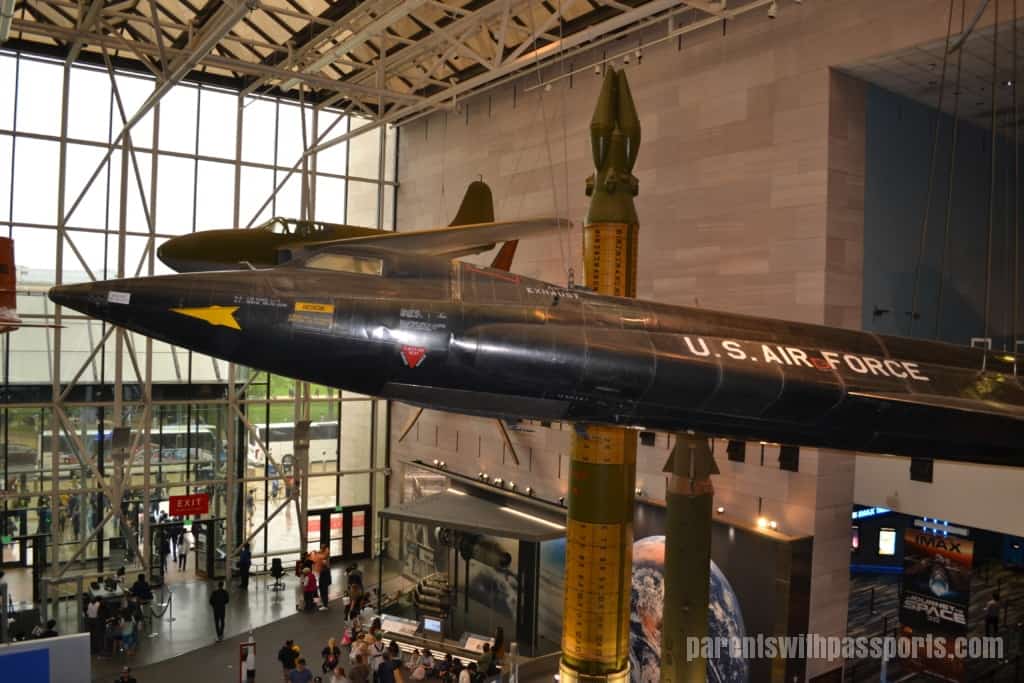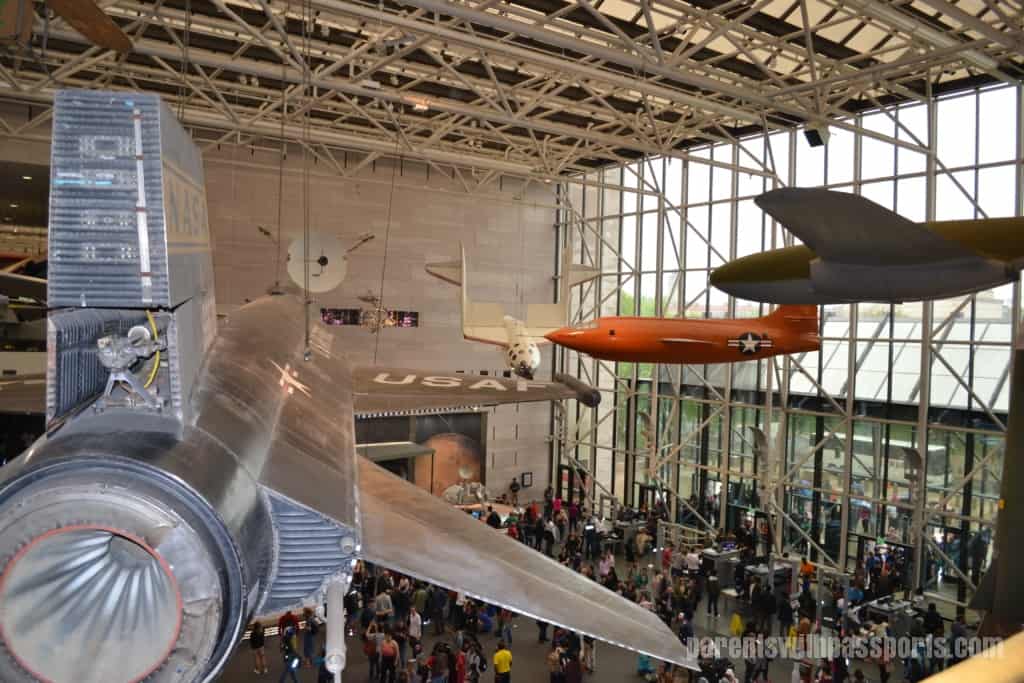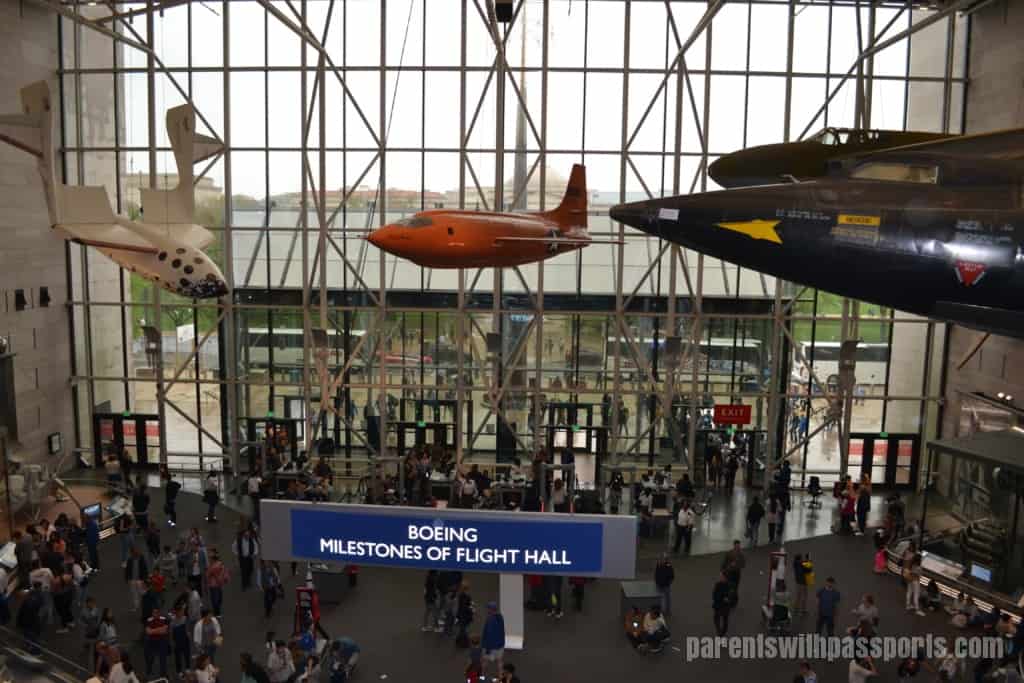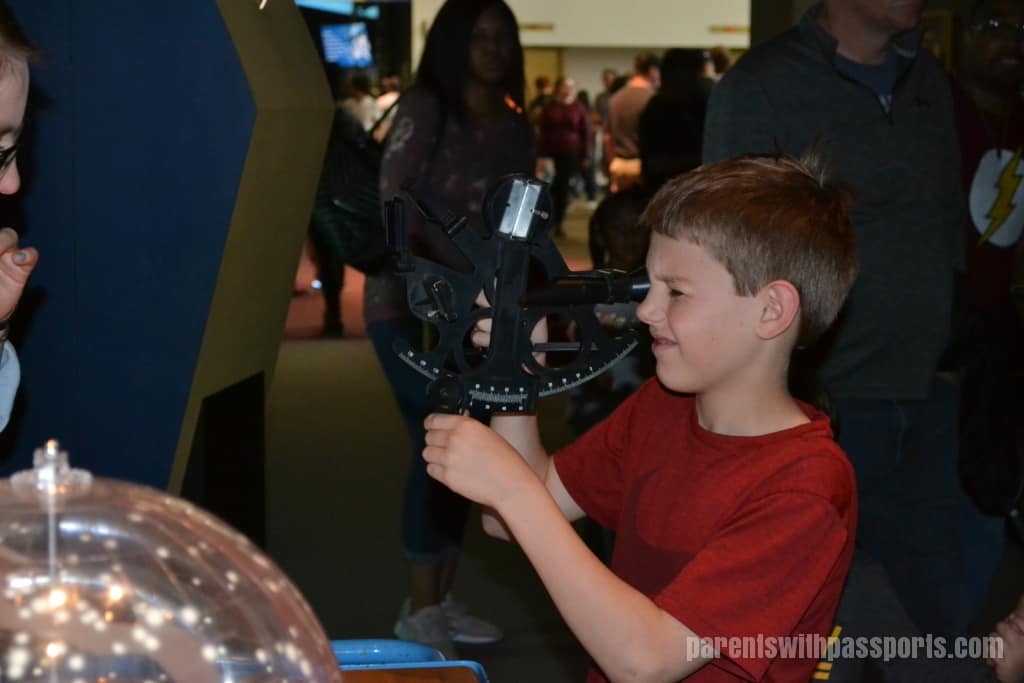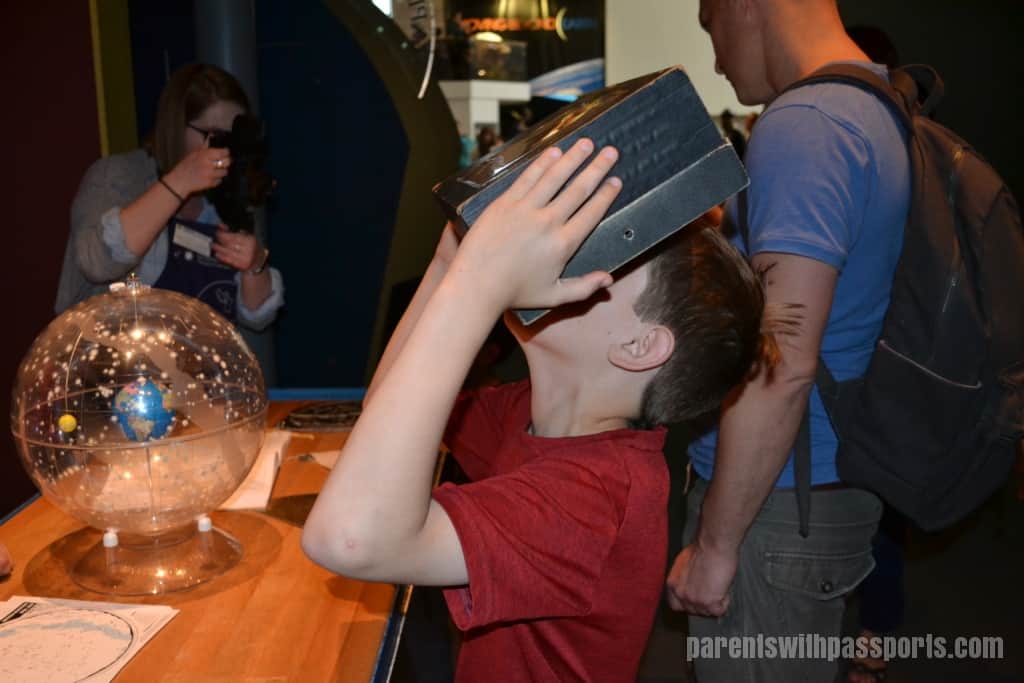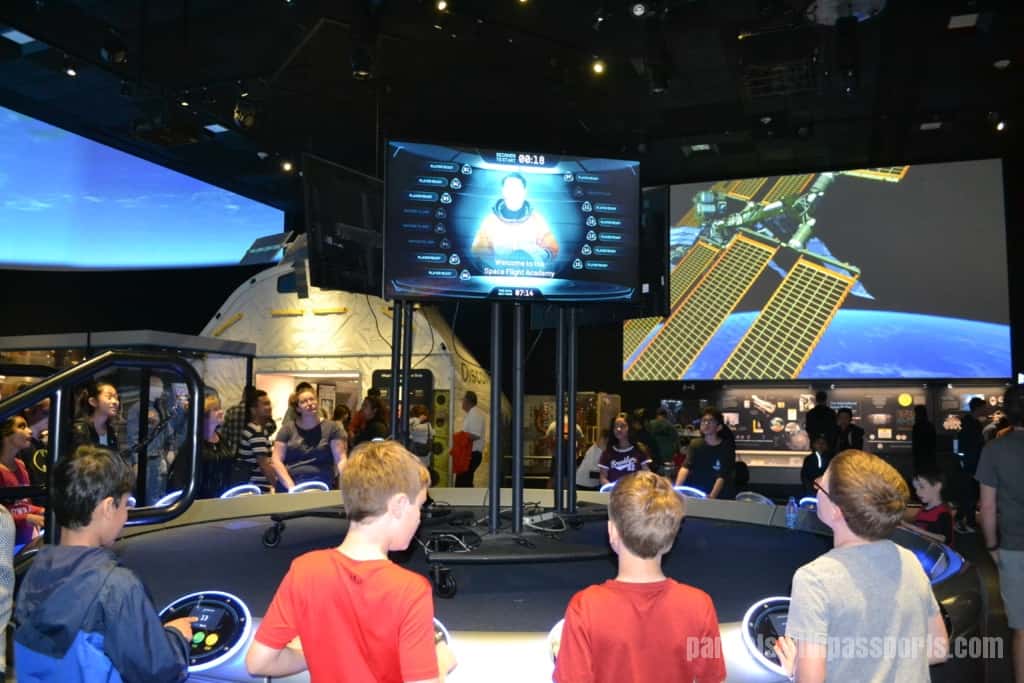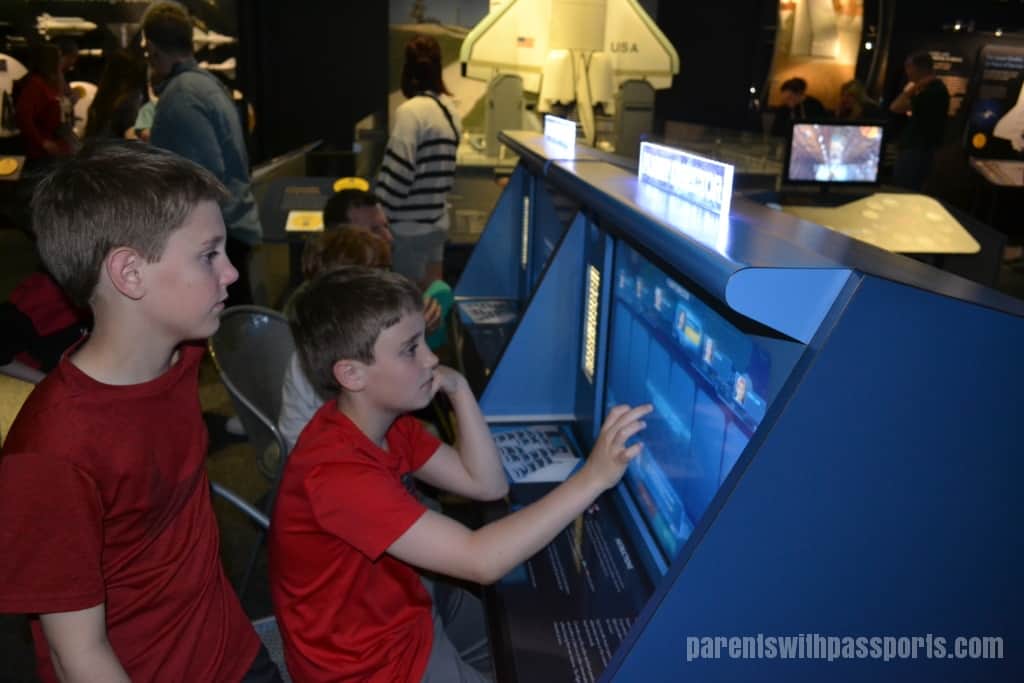The second stop on our Smithsonian museum day was the Air and Space Museum. When we visited DC 5 years ago, the kids spent hours here. On this trip they spent hours in the Natural History Museum and less time here. Their lengthy visit at the Natural History Museum turned out to be fortuitous, as we found that much of the Air and Space Museum was closed for renovations on this trip. The division of time was perfect and an hour and a half was all we really needed here.
The Air and Space Museum main atrium definitely has a big “wow” factor. With space shuttles and airplanes hanging from the ceiling, it makes an immediate impact. The front entrance wall is two stories of windows, which brought in light even on a rainy day and gave the feeling of the planes actually being in the sky.
We didn’t do thorough enough research and were surprised to find SO many of the exhibits closed for renovation. (The website clearly states that they are undergoing a 7 year renovation with phased closures so it was definitely my fault for not digging in to understand what that meant.) We ended up not having a lot of time so it wasn’t a huge deal, but some of the exhibits we had been looking forward to were closed.
We spent most of our time downstairs. The boys really liked the “Explore the Universe” exhibit, which focuses on astronomical instruments. Covering telescopes, photography, and spectroscopy, the exhibit shows how humans have tried to answer questions about the universe, including its age, size, and beginnings.
At the entrance, a discovery cart was setup where you could try out a few different instruments. They got to look through a sextant, an instrument used to measure the altitude of an object in space above the horizon. It was a little complicated but a museum worker was on hand to help out. And they also checked out the slightly less complicated constellation in a box.
The Exploring the Universe Exhibit is broken into 5 sections that showcase the evolution of astronomical tools: Naked Eye, Telescope, Photography, Spectroscopy, and Digital Age. It houses an impressive collection of scientific instruments and space artifacts from all the different stages.
There are a lot of interactive activities throughout the exhibit and we really spent the bulk of our time in here. The telescope section was especially detailed, although much of the information was technical and over their heads. But they still enjoyed seeing the various models from over the years. It was neat to compare photographs taken by telescopes over the years so you could see the progression of the distance and clarity of telescopes over time.
When the boys were finished learning about the universe, we wandered across the hall to the Moving Beyond Earth exhibit. They were immediately drawn in by the wall-sized projection screen showing a space shuttle launch. While the previous exhibit focused on observing space from earth, this one explored spaceflight and what it was actually like to be in space.
Again, the hands-on activities proved to be the favorites. All the kids in the room were vying for a spot at the quiz show controllers so they could play a space version of “Who Wants to be a Millionaire” called “Spaceflight Academy”. And the computer station where they got to be a flight controller in mission control for a shuttle launch was also a big hit.
After our flight directors successfully launched their shuttles, we headed out to do one last overall tour of the building. There are so many amazing aircrafts here that just walking around to look at them all is worth your time. With such famous aircrafts as the Spirit of St. Louis, Amelia Earhart’s Lockheed Vega, and the Wright Brothers plane, everyone from casual observers to flight fanatics are sure to be impressed.
While we spent a short amount of time here (about 1.5 hours) and many of the exhibits were closed for renovation, it was still a very worthwhile visit. The boys loved the two exhibits they focused on and found all of the interactive elements really engaging. And visually, it is just a neat museum to walk around. There is also a second location of the air and space museum, the Steven F. Udvar-Hazy Center near Dulles Airport. I have heard many people say that the Dulles location is fantastic and even better than the one on the National Mall. I can’t personally speak to that but I know that we will prioritize the other location on our next visit, especially if renovations are still underway at the main museum.
